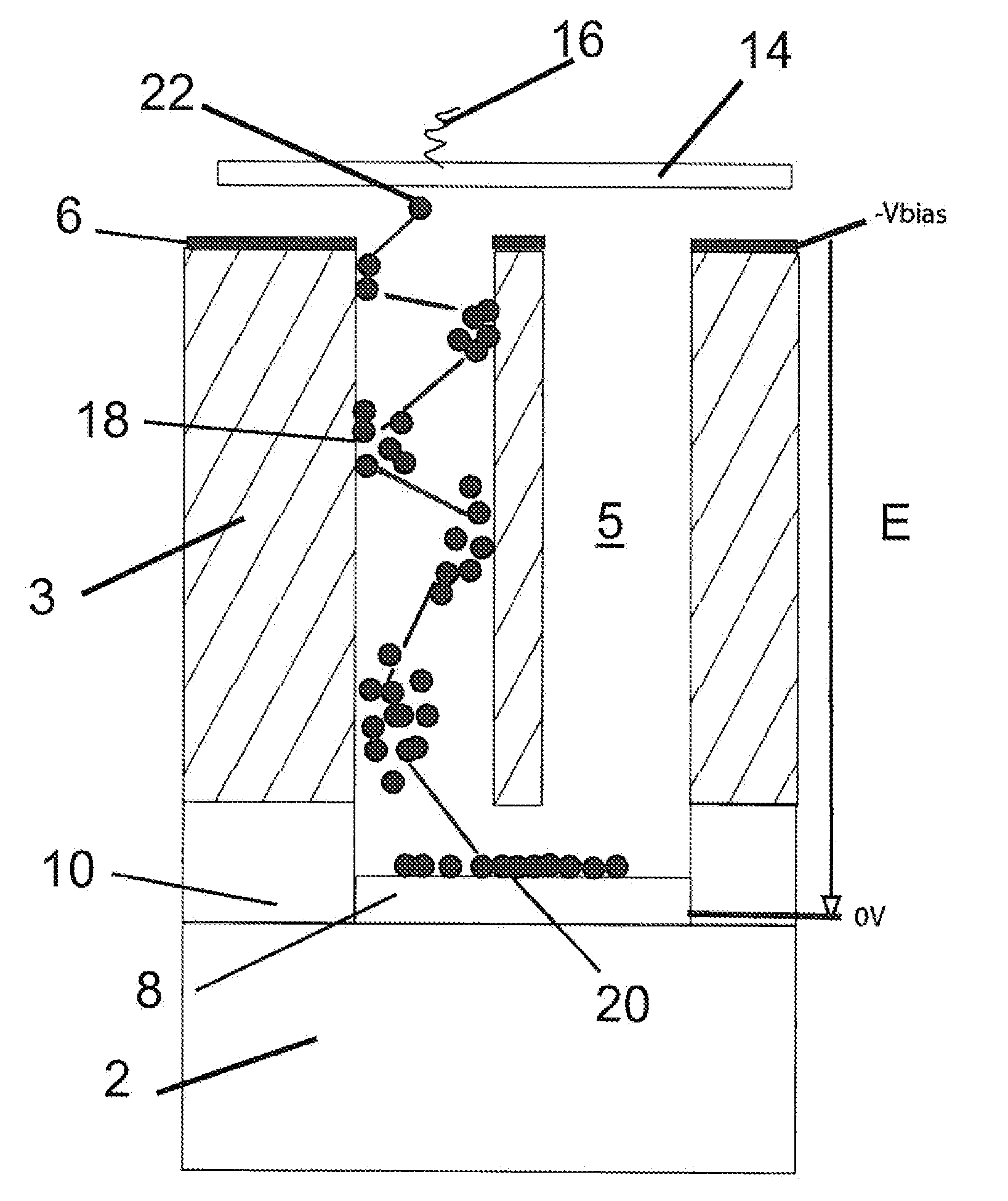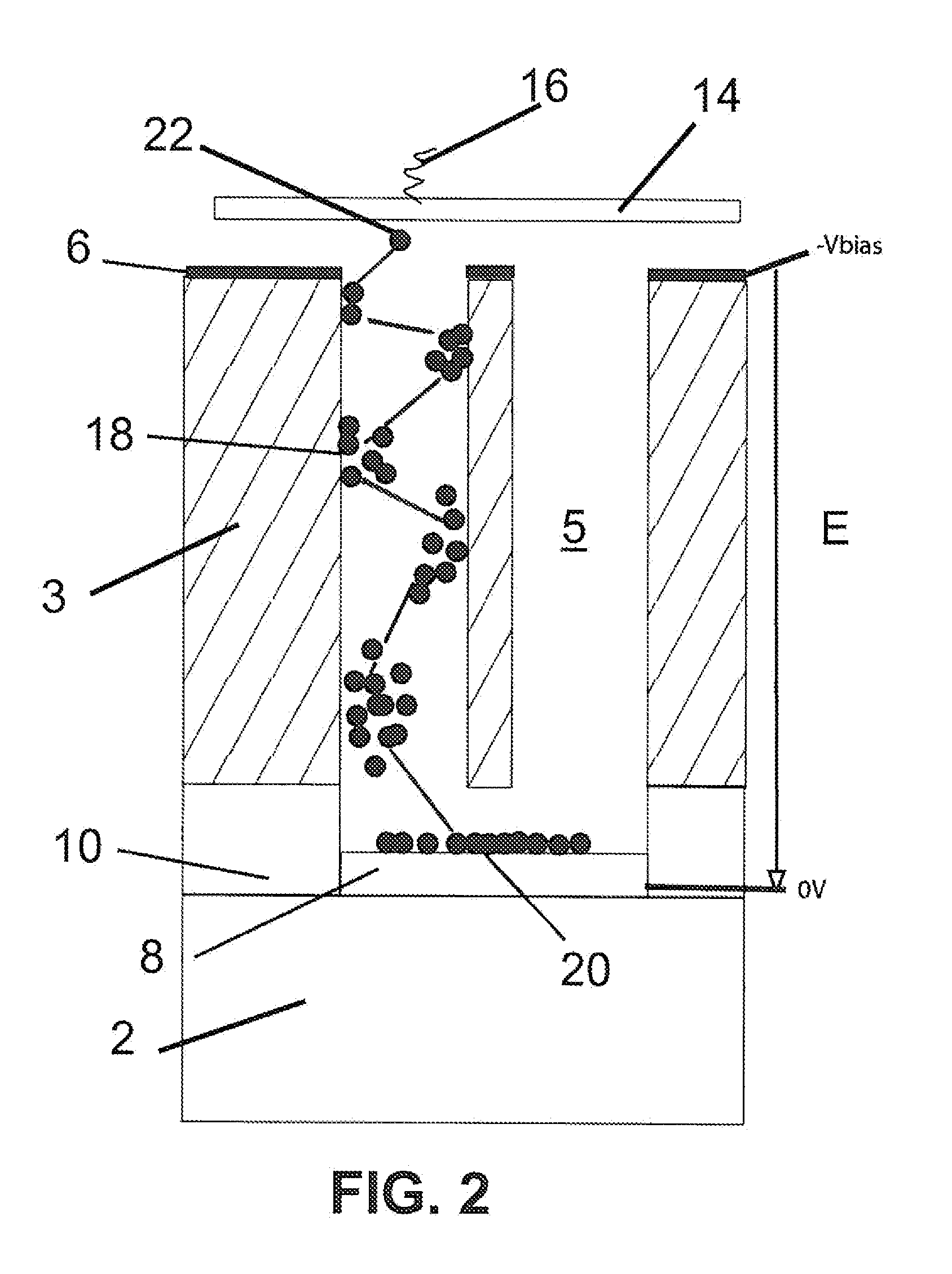Microchannel plate and its manufacturing method
a microchannel plate and manufacturing method technology, applied in the field of microchannel plates, can solve the problems of low resistivity of bulk crystalline materials, complex process, and high cost, and achieve the effect of maintaining a large open area ratio, and reducing the cost of production
- Summary
- Abstract
- Description
- Claims
- Application Information
AI Technical Summary
Benefits of technology
Problems solved by technology
Method used
Image
Examples
example
[0077]A microchannel plate of the invention was obtained by using, as passive substrate, an oxidized silicon wafer with pixel collecting electrodes. An intrinsic hydrogenated amorphous silicon film was deposited on said substrate by PECVD, with a thickness of 100 μm. An array of microchannels was formed by DRIE, the channels having a diameter of 3 μm.
[0078]The current was measured on a microchannel plate pixel as a function of the microchannel plate bias voltage and beam intensity for an electron beam focused on the sample. The results are shown in FIG. 3. The curve A corresponds to no beam, the curve B corresponds to a beam of 1.06 A, the curve C corresponds to a beam of 1.31 A, and the curve D corresponds to a beam of 1.56 A. Increase in the bias voltage enhanced the response of the microchannel plate (amplification of the incoming electron beams).
PUM
| Property | Measurement | Unit |
|---|---|---|
| thickness | aaaaa | aaaaa |
| thickness | aaaaa | aaaaa |
| thickness | aaaaa | aaaaa |
Abstract
Description
Claims
Application Information
 Login to View More
Login to View More - R&D
- Intellectual Property
- Life Sciences
- Materials
- Tech Scout
- Unparalleled Data Quality
- Higher Quality Content
- 60% Fewer Hallucinations
Browse by: Latest US Patents, China's latest patents, Technical Efficacy Thesaurus, Application Domain, Technology Topic, Popular Technical Reports.
© 2025 PatSnap. All rights reserved.Legal|Privacy policy|Modern Slavery Act Transparency Statement|Sitemap|About US| Contact US: help@patsnap.com



